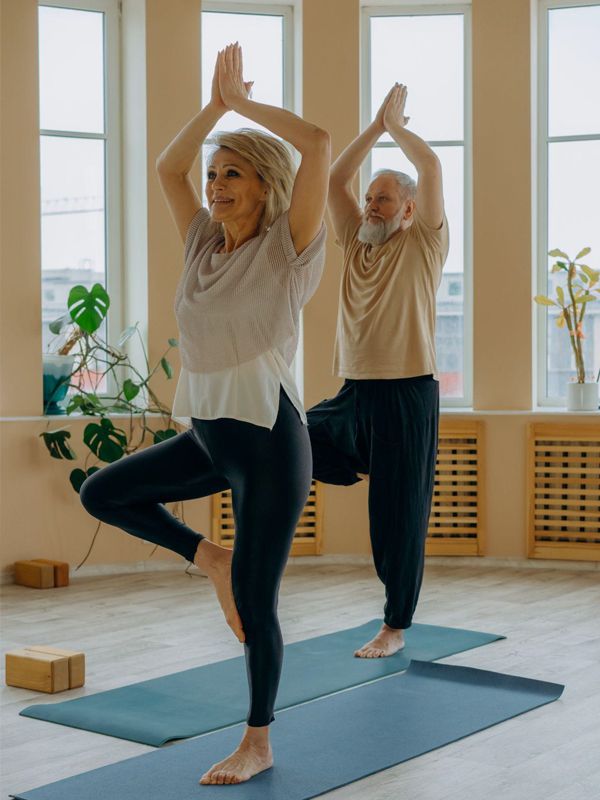A Beginner’s guide to start Yoga asana practice
A Beginner’s guide to start Yoga asana practice
Getting Started
Hatha Yoga
Vinyasa (Krama / Flow) Ashtanga Yoga
It is important to consider that although they may be similar, these styles have different origins and some substantial differences:
- Vinyasa (Krama) Yoga: practice supported and refined by the one who is still defined as the father of modern yoga, T. Krishnamacharya. ‘Vinyasa Krama’ means ‘cleverly constructed progressive sequence. ‘ It is a guided sequence, always in a different way, with some precautions that make it effective for the practitioner, helping him to enter complex positions safely and gradually. The classes are dynamic but maintain the asanas for several breaths, so they can also be challenging from the point of view of concentration.
- Vinyasa (Flow) Yoga: deriving from the more traditional Vinyasa Krama style, Vinyasa Flow has evolved in the West as a mix of yoga asana, contemporary dance, conscious movement, martial arts, and much more. All the styles derived and invented by Western teachers, such as Power Yoga, Prana Flow, Rocket Yoga, Anukalana Yoga, etc. These types of classes may vary depending on the teacher, but in general, the common feature is that we move (and sweat) a lot!
- Ashtanga Yoga was developed by one of T. Krishnamacharya’s students, namely Sri K. Pattabhi Jois. In this case, a specific sequence of asanas is performed, which always remains the same: in fact, it always starts from the first series and continues to do it and repeat it until it is fully learned, and then moves on to the next one. I do not recommend the type of class called “Ashtanga Mysore” for beginners because it requires knowledge of the sequence already practiced individually without the teacher’s help.
Choose a suitable yoga style
Some are calmer and more static such as Hatha Yoga, others are much more physical and dynamic, such as Ashtanga, and still, others are completely different practices from others, such as laughter yoga.
Choosing the most suitable style for you is very important, because in this way you will be able to experience greater benefits and in less time.
There are many factors that can influence the choice; let’s see together the most important ones:
- Age: The expectations of a young person are totally different from those of someone who is older in age. Usually, young people prefer a much more vigorous and dynamic practice, while as we age, we prefer a much calmer and more relaxing style of yoga. But there are many exceptions.
- Purpose: What people want to achieve with yoga can be very different from one individual to another. Some try to lose weight; others try to get stronger; still, others try to eliminate stress. The choice of a style also depends on this. Certainly, if you want to increase your strength, you will have to orient yourself towards a much more dynamic and rigorous style such as Ashtanga; however, if your problem is stress, you will have to move towards a more calm and relaxing style. However, many benefits are common, only that you get there through different paths.
- Specific problems: if you have a specific type of problem, certainly the right choice for you is a type of therapeutic yoga, where the teacher focuses on you and your specific problem, making you do a different practice depending on your need.
- Work: by this, I mean that depending on the work you do, you may choose a different style. For example, if you do a very physical and stressful job, you could opt for a calm and relaxing style. On the contrary, if you sit at a desk all day, the best option, in my opinion, is a more rigorous and physical practice.
So get informed and make a choice that suits you.
How to tell if you are practicing yoga correctly
With yoga, the body regains its harmony, and one feels relaxed and at the same time full of energy and vitality.
If at the end of the sessions you do not feel regenerated, but you feel tired and have a sense of discomfort or malaise, you are probably not doing the exercises well, or you do not have the right attitude towards the discipline.
It is important to perform the positions taking into account your limits and abilities, especially at the beginning. Feeling pain during the first lessons is absolutely normal because the body has to get used to the new movements.
You should never overdo it or want to get a certain result quickly, everyone has their own time, and yoga is by definition the discipline of slowness and calm.
With perseverance and commitment, enormous benefits can also be obtained in everyday life.
Finally,
ASHAexperience is a healing community platform that connects people and Ayurvedic Doctors with experienced yoga teachers. ASHAexperience’s ever-expanding teaching and healing community is trained to understand body anatomy, biomechanics, physiology, and traditional yoga practice.
And with this strength of knowledge, they are able to create personalized and effective yoga programs for each student. So, are you ready to channel your inner yogi?
We believe in collaborative relationship-based care where our Ayurvedic Doctors, Ayurvedic Practitioner, Ayurvedic Supplement Brands, Ayurvedic Nutritionists & Chefs, Yoga, and Meditation Trainers are in sync. Contact the team who passionately works together to hold your hand in this healing journey.


